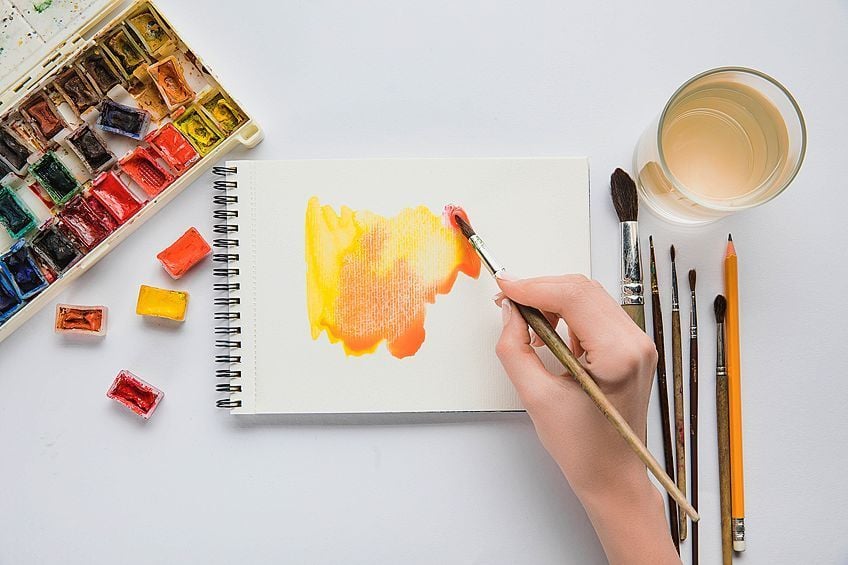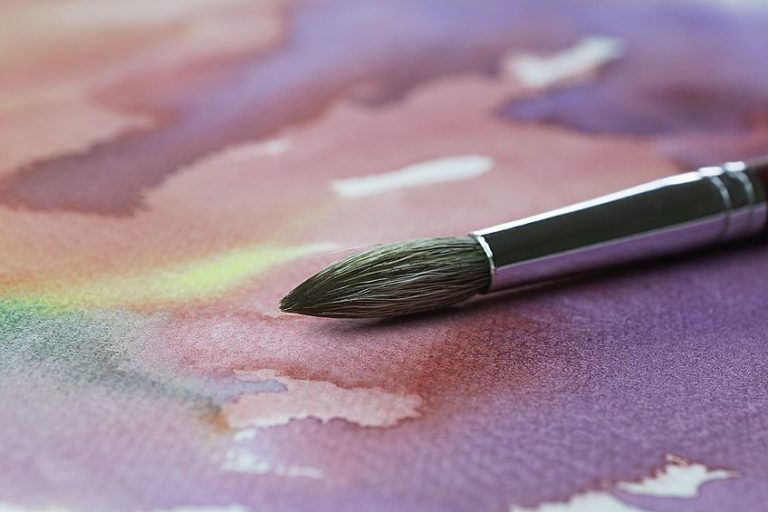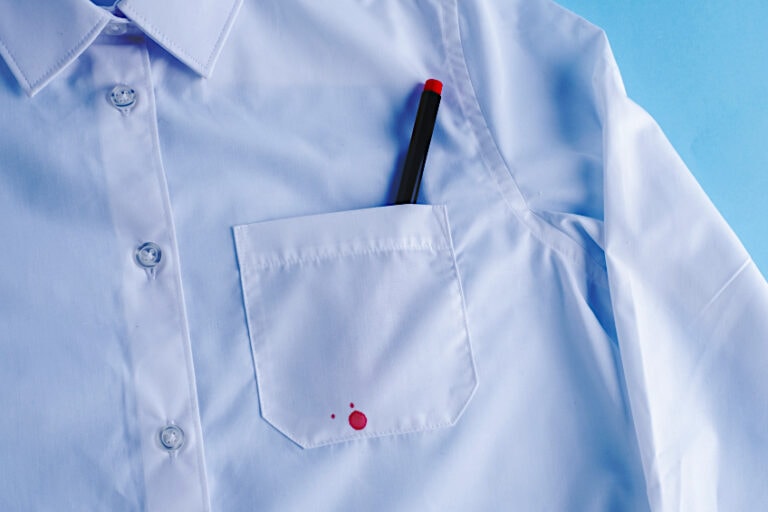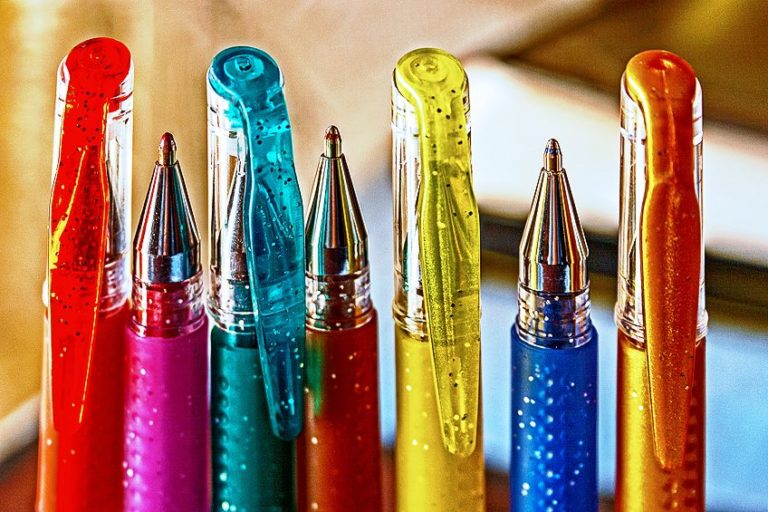Best Masking Fluid – Finding the Top Art Masking Fluid to Use
This post may contain affiliate links. We may earn a small commission from purchases made through them, at no additional cost to you.
If you have ever worked with watercolor paints, then you will know just how tricky it can be to leave a space on the page free of paint, and therefore white. Watercolor paints are notorious for bleeding through the paper as you paint, so the color often spreads like wildfire – uncontrollably. Masking fluid pens, or art masking fluid, are super helpful in these instances, keeping certain spaces and saving the day at the same time. This tutorial is all about finding the best masking fluid, and how to use masking fluid. What is masking fluid? By the end of this tutorial, you will be able to answer that question for yourself. You will also be able to explain the difference between liquid masking fluid, and a masking fluid pen. Keep reading for an extensive guide on watercolor masking fluid.
Table of Contents
Masking Fluid Explained
So, what is masking fluid? Have you ever admired the accuracy of the lines where the paint meets a blank spot on people’s paintings? This is probably where those artists used masking fluid because it is a substance that creates a barrier where the paint cannot go through.
 Once it is dry properly, you can paint over it and that space will remain free of paint. If the paper was white underneath, you will have a white space shining through, in whatever design you painted the masking fluid as.
Once it is dry properly, you can paint over it and that space will remain free of paint. If the paper was white underneath, you will have a white space shining through, in whatever design you painted the masking fluid as.
Typically, watercolor masking fluid is a transparent mixture, but you can buy ones that have been tinted, and you can make one that is tinted with a little bit of watercolor paint. The tinted substance is helpful when you are working with white paper because you will be able to see what you are doing better than when painting a clear masking fluid over white paper.
We will explain more in detail how to use masking fluid, but in a nutshell, various techniques have different effects. You can apply it using several tools and materials, but it is applied most commonly using a paintbrush.
Considerations When Purchasing Liquid Masking Fluid
Simply understanding what masking fluid is, is not going to help you when you are buying it at the store. There are a few things to keep in mind when you are purchasing your masking fluid, whether it is watercolor masking fluid or one that is designed for other paints as well.
Compatibility
Some masking fluids are designed to only be compatible with some paints, or even one type of paint. There are, however, ones that are versatile enough to be compatible with the other paints, or all of them. Make sure you read the packaging because it will describe the paints you can use the masking fluid with.
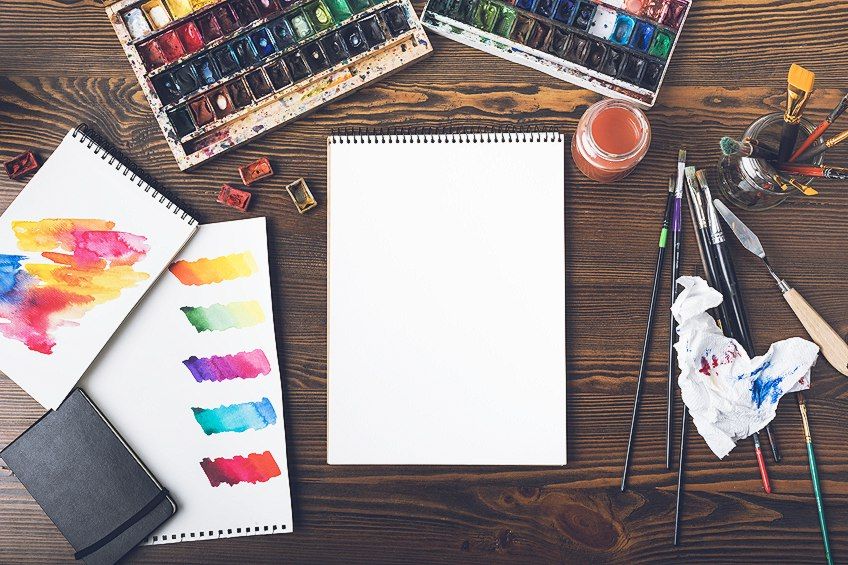
Clear, White, or Tinted Masking Fluid
When it comes to masking fluid, there is the typical one that is clear, which is what some artists prefer to use, but it also does make it hard to see what you are doing on any color paper. There is also a white masking fluid that might be helpful to some, but still tricky to see when you are working on a white piece of paper.
If you would like to be able to see what you have painted with the masking fluid, you can always buy a tinted version, or you can tint it yourself by adding some watercolor paint.
Consistency
What is the consistency of the masking fluid? Is it thick, or is it thin? The thicker the consistency means that it will be harder to peel off. Some come as a thinner consistency, it just depends on what you want to do with it.
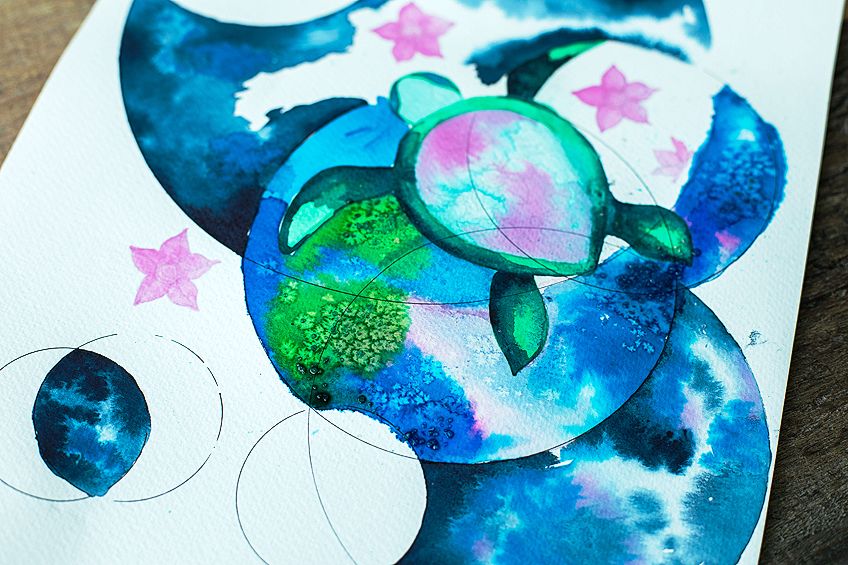
Application Method
When it comes to the various methods for applying the masking fluid, there are two main options to choose from. Firstly, there is the tub of liquid masking fluid, which comes in various sizes. To distribute this version, you can use a paintbrush.
Using different sized paintbrushes will allow you to put more or less onto the paper, and the different shaped tips will help you shape the lines and patterns the way you see fit.
If you want a little bit more precision, you can use the masking fluid pens. These also come in a few variations with different sized and shaped tips, for the same reason as using different shaped paintbrushes.
Drying Time
Make sure that you have set enough time for the artwork, and that a portion of that time is dedicated to waiting for the fluid to dry. Only dried masking fluid can keep paint off certain areas, and if you paint over wet masking fluid, the paint will make it more like a sticky goo, and they will smudge together. The same goes for waiting for the paint to dry properly before you attempt to remove the masking fluid.

The Best Masking Fluid Products
Now that you are clued-up on the different forms that masking fluid comes in and how to apply them, it is time to think about which masking fluid product works best for you. Here are a few brands that have manufactured some of the best masking fluid products on the market.
Most Recommended Liquid Masking Fluid: WINSOR & NEWTON Art Masking fluid
Winsor & Newton have produced an art masking fluid that dries incredibly quickly, so that you can start painting almost immediately after applying it. Not only does it dry super fast, but you can also peel it off very easily – all you need are your fingers. The bottle is well-designed, which means it has a long shelf-life. It seals nicely so it will not dry out.
- Extremely easy to use and apply
- Pigmented liquid is composed of rubber latex and pigment
- Provides ample protection for when color is applied in broad washes
This masking fluid has been tinted lightly with watercolor paints, which makes it much easier to work with because you can see what you are doing, and you do not have to worry about the paper being tinted when you apply it.
PROS
- Extremely fast drying
- Peels off very easily when it has dried properly
- Tinted for easy application
- Will not leave any tint or residue when it is peeled off
- Consistency is easy to work with
CONS
- Clear version is not easy to work with as it is hard to see what you are doing
Top Masking Fluid for Versatility: PEBEO Liquid Latex Masking Fluid
Besides being able to apply Pebeo Masking Fluid on watercolors, this masking fluid can also be used with other types of dry mediums, such as pencils or crayons. It can also be used with acrylics with great success.
- Easy to apply with a brush or pen
- Dries very quickly so no time is wasted
- Natural latex masking liquid is made up of an easy-to-peel formula
You can use them for art projects involving mixed media, and they can be used on several different surface materials, so you are not limited to paper. A waterproof barrier is formed by the masking fluid, which prevents any paint from penetrating so that the paper underneath stays white.
PROS
- Able to work with many different types of surface materials and painting mediums
- Tinted a blue color for easy application which allows you to see what you are painting
- You can peel it off easily without tearing the paper
- No residue will be left behind after
- Will not overly saturate the paper it is applied to
CONS
- Said to have an ugly odor
Most Precise Masking Fluid: FINELINE Masking Fluid Pen
If precision is your game, then you will appreciate the masking fluid pens by Fineline. This brand is well known amongst graphic designers and artists alike. It promises smooth application of the masking fluid, as well as offering precision that many other masking fluid pens are not able to live up to. You will not have to worry about this pen getting clogged at the applicator tip, because of the way it was designed.
- Stainless steel dispensing tip for precise application
- The unique cap/wire system is non-clogging and air-tight
- Used with acrylics, ink, watercolors, oil paints, silk dyes, and more
The tip itself is measured at 0.5 mm, which is the perfect size to achieve the smallest and most intricate detailing. When you want to remove the masking fluid, you can do so quite easily by using your fingers. There will be no residue left behind, so you can expect professional-looking artwork when you are done.
PROS
- Works with various types of mediums
- Allows for precise intricacy
- Peels off easily when dry
CONS
- Cap has been an issue for some users
- Tip of the pen tends to bend
Instructions for Applying Watercolor Masking Fluid
Have you ever seen those paintings of the night sky, where the stars are perfectly white as well as being amazingly detailed? Many people wonder if that is possible, and marvel at the artist’s steady hand that can paint around a white spot with such accuracy. What many people do not know is that that artist most likely used some masking fluid to help them keep that spot white.
Masking fluid is essentially a mixture that you paint onto your piece of paper which will dry, and then the paint will not be able to penetrate the force field it creates.
- It is always a good idea to start with some planning. That way you will know where you are going with the masking fluid and you will not waste any of the material. Start by lightly sketching with a pencil the basic outline of whatever you want to be painted with the masking fluid.
- We have mentioned the different application methods, which are using either the masking fluid pens or the liquid masking fluid which comes in a bottle. If you choose the latter, then please be advised that you should never shake the bottle. If you shake the bottle, you will be annoyed with the lumps and bumps that the shaking causes. When you open the bottle, you can use a popsicle stick to stir it to ensure that the consistency stays smooth whilst it mixes.
- Distribute some of the liquid masking fluid into a small bowl and then close the bottle by selling the cap back on. Masking fluid tends to dry out pretty easily, so this helps to keep the bottle lasting as long as possible. If you find that the masking fluid that you have distributed into that small bowl is too thick and tricky to work with, then you can add in a drop of water. Do not add too much, because you will be applying this to paper, and you do not want it to make it all soggy.
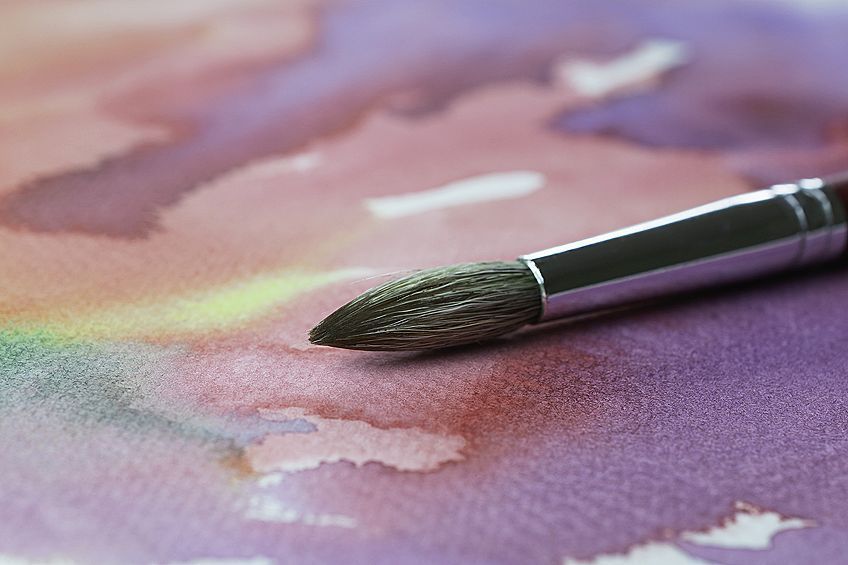
- Select the paintbrush that you wish to use for the application, and make sure that it is clean. It often makes it much easier to clean up when you are done if the paintbrush is coated with a little soap while it is still wet. If you do not have an old brush that you do not mind getting a little tatty (that is the reality with using a paintbrush with masking fluid) you can use a silicone-based brush.
- The ideal paper for us for an artwork where masking fluid is involved would be a high-quality paper. The lower-quality papers are not as durable because they are more than often too thin. This also makes them very absorbent so they soak up whatever has been painted on them.
- Once you have painted the piece of paper with your masking fluid, and you are satisfied that all the bits that you want to remain white have been covered, then you must set that aside and wait for it to dry. This is imperative to the success of your artwork. If you paint over the masking fluid that is still slightly wet, it will cause the masking fluid to go all gooey and it will not hold the paint off that area like it was intended to.
Removing Masking Fluid
When you want to finally take off the masking fluid, there are a few things you need to keep in mind before you go all-gung-ho on the dried solution. What climate are you working in, is it humid or is it a dry climate? This will affect how easily the art masking fluid peels off. Not only that, but you must also consider whether the masking fluid was applied in a thick layer or a thin one.
The thicker the layer of masking fluid, the more prone the paper will be to tearing.
Let us say you are working in a dense and tropical jungle that is situated in a highly humid environment. As beautiful as this type of environment can be, they are what makes painting much trickier. The paint will need longer to dry, but more importantly, the masking fluid will need much longer to dry before you can apply any paint onto the paper.
 If the environment is cooler, you will find the same problem. Make sure you wait for the right amount of time for it to dry before the paint is added to it. The paint will make the substance go all gooey so that is not advisable.
If the environment is cooler, you will find the same problem. Make sure you wait for the right amount of time for it to dry before the paint is added to it. The paint will make the substance go all gooey so that is not advisable.
Some erasers are specially crafted to remove masking fluid, and they are called kneadable erasers. Rub the side edges of the masking fluid when it has dried, and then you will see the stuff start to lift off. You can gently work them off the page. They will peel off nicely if the masking fluid is dry.
Techniques for Applying Watercolor Masking Fluid
There is no one way that you can apply masking fluid. Various methods will help you achieve different styles. Here are a few of the methods that you can try.
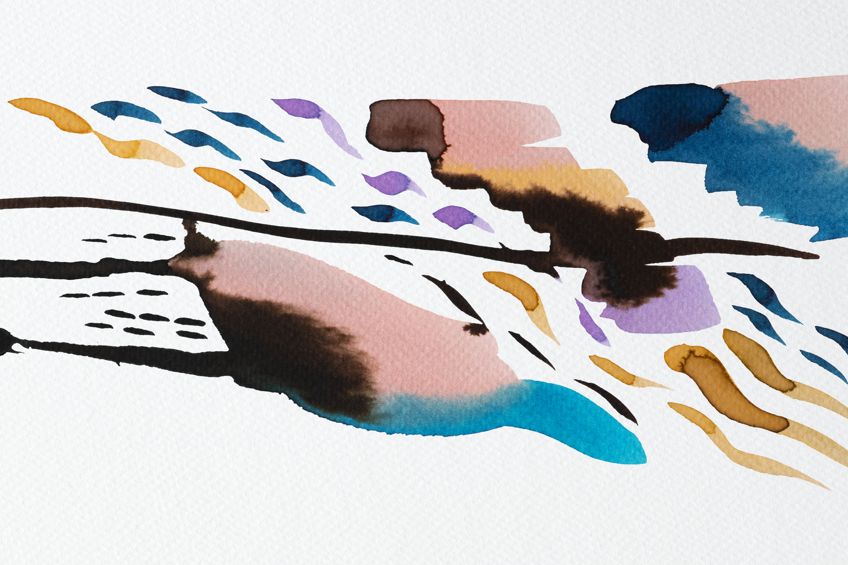
How to Use Masking Fluid with a Brush
The most commonly used technique for applying the masking fluid in liquid form is by using a paintbrush. Make sure that the brush is not a brand-new, amazing condition paintbrush because the masking fluid will ruin it.
To keep them in better condition for a longer period, you can first dip the paintbrush in water, and then rub some sap over the bristles. This prevents the masking fluid from caking so easily onto the bristles, and the clean-up will be easier.
How to Use Masking Fluid Pens
A masking fluid pen is super useful, especially when you are painting outdoors, or on the go. The pends are loaded with the mixture, and you can achieve highly intricate details with the nibs of the pens. Some making fluid pens are designed for blocking in the fluid, and others are designed for intricacy.
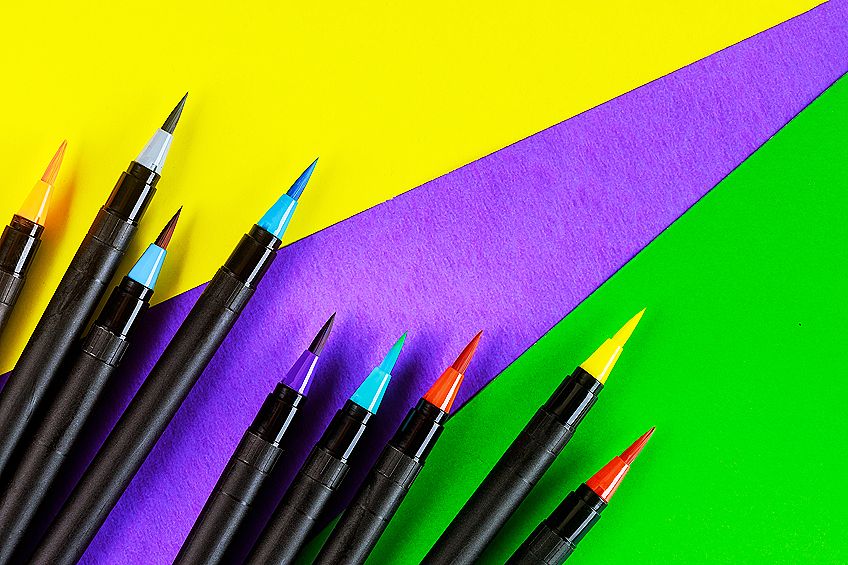
Using a Color Shaper
A color shaper is something artists like to use when they are blending their colors and many more useful things. They are made of a rubbery material, so they are without any fibers, but that makes them super quick and easy to clean up.
When using one of these for applying masking fluid, it will need to be re-dipped into the solution a few times.
Applying Masking Fluid with a Sponge
A natural sponge is best for this technique, and it can create some amazingly beautiful and unique designs. The sponge should be made damp before the fluid touches it, and once it is damp and dipped with masking fluid, you can swipe the sponge over the paper in different ways to get various styles.
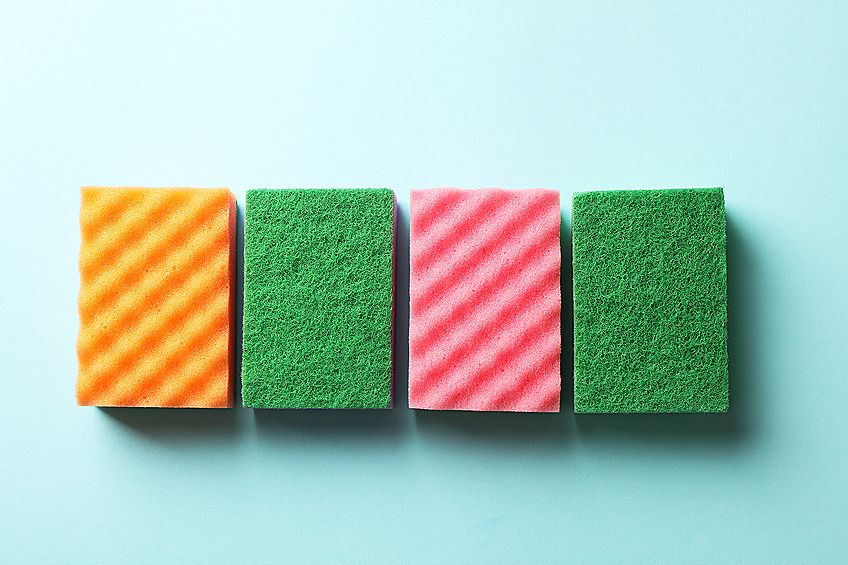
Using a Toothbrush with Masking Fluid
When you are painting a night sky or scenery from space, you might struggle with the stars. Instead of having to paint white flecks over the black, you can fleck on the masking fluid using a toothbrush.
Making Your Own Masking Fluid
You do not always have to go out and buy what someone has told you is the best masking fluid that might cost you a pretty penny or three. You always have the freedom to make your own, and it is marvelously easy to make. There are two ways to make your masking fluid.
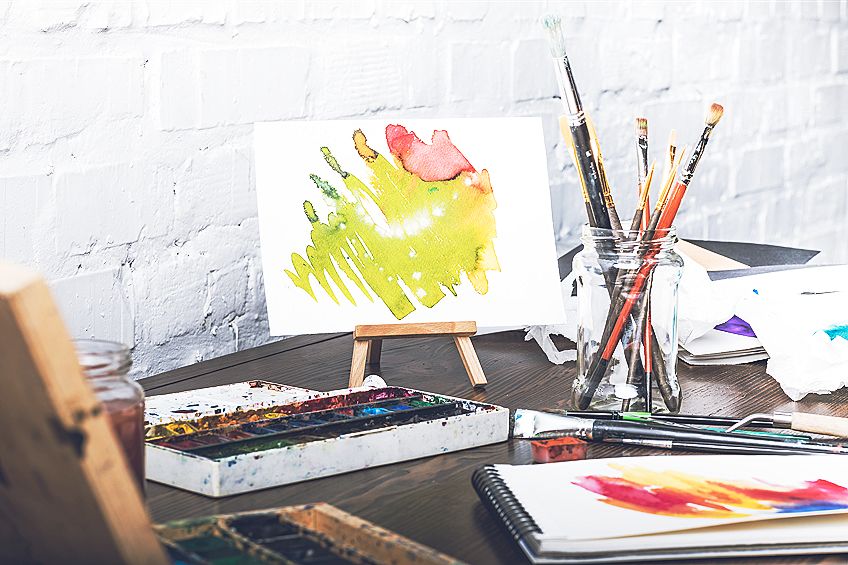 The first is by mixing fabric cement that is latex-based, water, and watercolor paint to add a tint. Mix all three inside a container that can close airtight. The mixture should have equal parts of both water and the fabric cement, and only a smidgen of the watercolor paint for the tint (should you wish for it to be tinted).
The first is by mixing fabric cement that is latex-based, water, and watercolor paint to add a tint. Mix all three inside a container that can close airtight. The mixture should have equal parts of both water and the fabric cement, and only a smidgen of the watercolor paint for the tint (should you wish for it to be tinted).
The second method for making your own masking fluid, which might be more accessible for most people at home, is by mixing melted deodorant sticks.
When it comes to this method, it does not matter what brand the deodorant sticks are. A microwave will be your best bet when it comes to the melting part. You can take the bowl out and stir the deodorant a little bit so that it does not get too hot.
Final Suggestions for Watercolor Masking Fluid
Now that you know pretty much everything there is to know about masking fluid, you might want to start right away. But, before you set off to the art store, or click “buy” for the masking fluid pen staring at you from your shopping cart online, we recommend you read our final suggestions.
This will help you make sure you get the best masking fluid available, as well as understand how to use masking fluid better.

- Make sure there is ample airflow and that you are wearing a respirator mask. This is done so that you do not breathe in the fumes. Masking fluid can be quite toxic because a lot of manufacturers have made them with a fair amount of ammonium in the formula.
- Make sure that the paper you are working on is dry. If the paper is still wet, the liquid masking fluid is not going to stick properly.
- Use thick, high-quality paper. If the paper you are adding the masking tape to is too thin or lower quality, then the masking tape might cause the paper to tear when you try to take it off.
- Cleaning the liquid masking fluid off your clothes is quite simple. If it accidentally spills on your clothes or whatever fabric, you must simply wait for it to dry and then peel it off as you would on the paper you are painting on.
- When you are busy with the masking fluid in liquid form, rather dish some out into a container. Close the cap of the masking fluid when you are not working with it so that the air does not dry the liquid out.

- Always test your marking fluid out. Before you apply the paint over your masking fluid, or better yet, before you apply the masking fluid to your page, test it to make sure it is compatible with your paint.
- The longer you leave the masking fluid on the paper, the harder it gets. Thus, it will become more difficult to remove, which may cause the paper to tear.
- Use a color blender to help take off the masking fluid. This will help you to avoid tearing the paper.
- Before you apply the masking fluid in liquid form, you must stir the liquid. Shaking it is not recommended.
- Apply the masking fluid in thin coats. This is because thicker coats are not as easy to remove.
- Masking fluid will easily ruin your paintbrush. This is why we recommend using an older brush.
So, what is masking fluid? In conclusion, if you are painting in a hurry, or painting outdoors on uneven ground, or maybe you simply want the easiest method for leaving blank spaces on your canvas without any paint, the masking fluid pens or liquid is the answer to your quest. There are no limits to the designs you can make now, and you will be able to complete a lot more paintings that have a higher sense of professionality.
Frequently Asked Questions
What Is Frisket?
Liquid masking fluid has another name, and many of you might be more familiar with this name. It is often referred to as liquid frisket, as opposed to liquid masking fluid. Ultimately, liquid frisket will help to prevent paint from going onto certain areas of your painting.
What Is Masking Fluid?
Art masking fluid can either be bought as liquid masking fluid or in the form of a masking fluid pen. This is an amazingly handy tool when it comes to preventing paint where you do not want the paint to go, thus leaving a black space open. It acts like a plug that covers certain areas in the design of your art, and the paint will not seep through it. You can then peel it off when your painting is complete and the white canvas will shine through.
How Do You Remove Masking Fluid?
Once you are happy with your painting and are positive that no corrections should be made, you can take off the masking fluid. To do this by hand, you must use your fingers to pick at the fluid, and it will peel away. You can also buy specially designed erasers that will help to remove the masking tape.
Is It Possible to Use Masking Fluid with Acrylic Paints?
Some masking fluids are designed especially for certain types of paint, like watercolor masking fluid, with some artists preferring to use these. For those that do not want to buy many different masking fluids, some of the best masking fluids are designed for acrylics.
Larissa Meyer is a 32-year-old mother from Michigan and creative spirit since childhood. Her passion for painting and drawing has led her to an education as an illustrator and a career as a freelance graphic designer. She has a Bachelor of Fine Arts in Illustration and a degree in Graphic Design. Larissa is a talented artist who is able to master a wide range of styles and techniques to bring her artistic vision to life. Her greatest passion is currently fluid painting and epoxy resin art. Larissa’s love for art and her knowledge and experience in illustration make her the perfect Creative Director for our fluid-painting.com team. She is the creative head of our team and shares her passion and knowledge with our community through articles and tutorials.
As a mother of a 2-year-old daughter, Larissa also understands the importance of fostering creativity in early childhood. She uses her experience and knowledge to help other parents inspire their children and develop their artistic skills as well.
Learn more about Larissa Meyer and about us.

